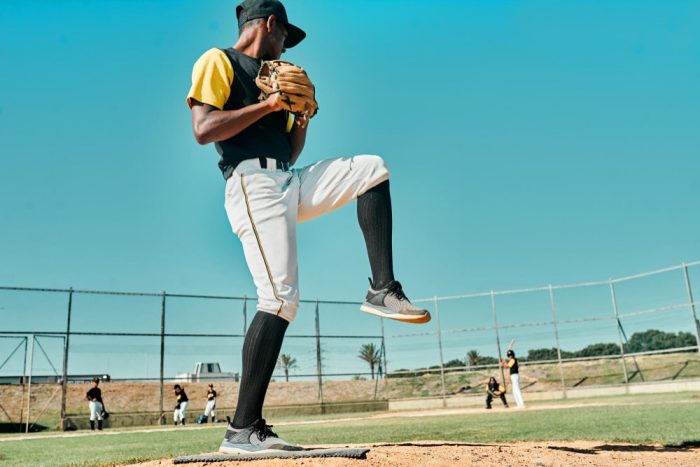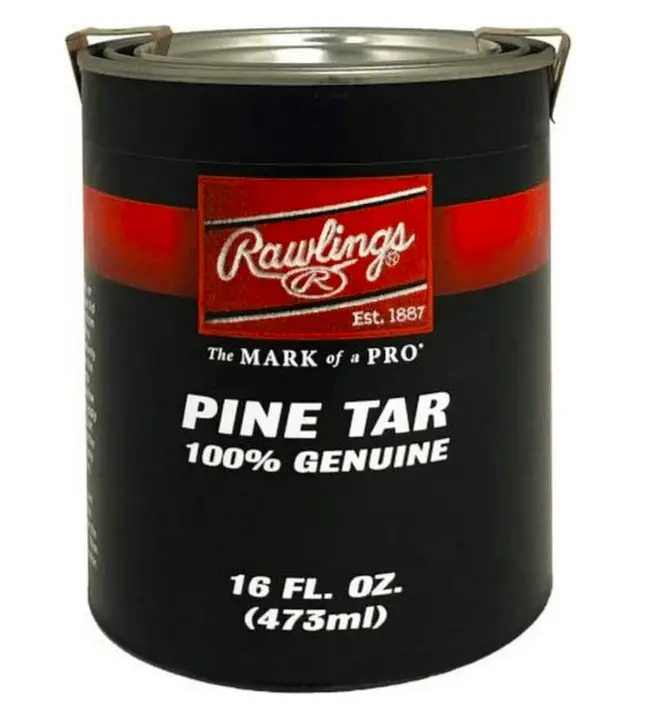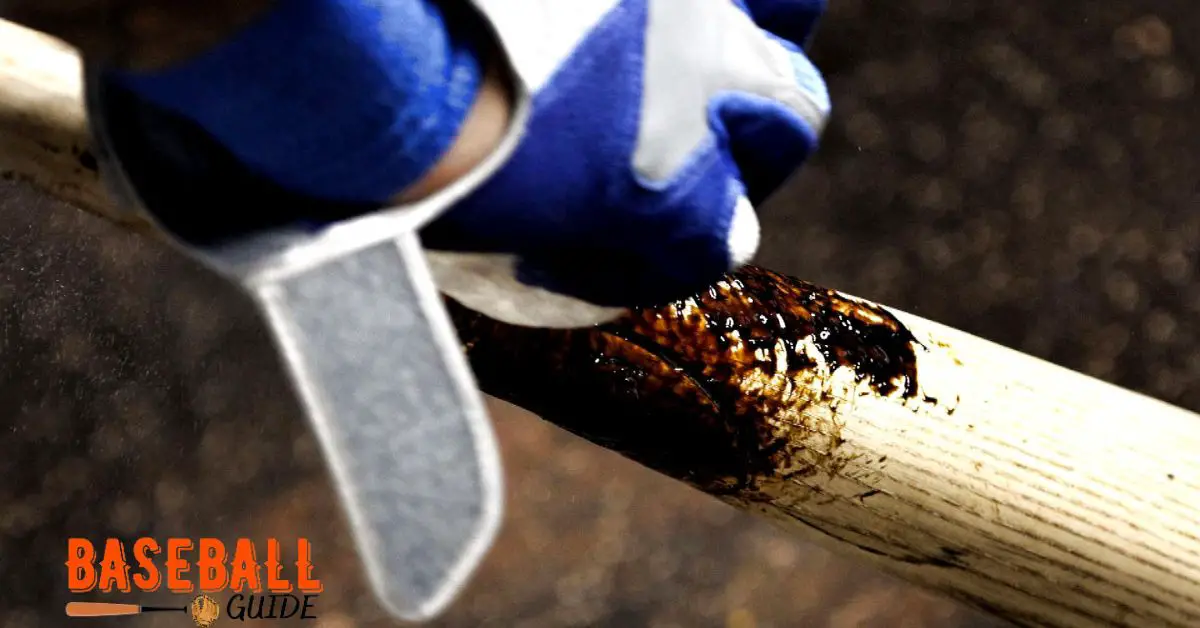Pine tar is the sticky stuff produced from the wood used by baseball players.
So, are you a baseball enthusiast who wants to know more about the function of pine tar in the sport?
Or do you want to learn how to utilize pine tar to improve your bat skills?
Or did you come here after hearing about the most famous pine tar incident in 1983?
Whatever the case may be, you’ve come to the perfect place for all of your answers, as I’ve addressed everything in this post.
Continue reading to learn all there is to know about pine tar.
Famous Pine Tar Incident of 1983
The pine tar incident of 1983 could be one of the reasons for you to come up here.
This incident is quite popular in baseball’s history.
The pine tar incident happened when George Brett of the Kansas City Royals hit a game-winning two-run home run in the ninth inning against the New York Yankees.
George Brett has used an excessive amount of pine tar exceeding the 18-inch limitation. He was given out for using an illegal bat (at that time, the rule did not mention that the batter shall not be given out for using excessive pine tar grounds).
Watch this video of the 1983 Pine Tar incident.
Use of Pine Tar for Baseball
Pine tar is a brownish-black, sticky material that baseball hitters may apply to their bat handles to strengthen their grip and keep the bat from slipping out of their hands.
A strong and relaxed grip helps players to hit the baseball in such a manner that the ball makes greater contact, and the exit velocity improves, resulting in more pop.
Same as the bat, if applied to the baseball, gripping it becomes easier; if the weather is cold and the balls are slippery, applying pine tar to the ball will make gripping the ball easier.
Is Pine Tar Illegal in Baseball?
The legality of using pine tar differs depending on whether you are a hitter or a pitcher.
Pine tar is okay for batters or hitters, but it is banned for pitchers. These facts are supported by the official MLB rules stated below. You can also check this super long pdf full of MLB rules.
Pine Tar Rules In Baseball
To clarify whether using pine tar is legal or illegal in baseball, I am stating all the rules relevant to the use of any foreign substance (here, pine tar) by the pitchers and batters.
Pitcher Rules:

- Rule 3.01: No player shall intentionally discolor or damage the ball by rubbing it with soil, rosin, paraffin, licorice, sand-paper, emery paper, or other foreign substance.
- Rule 3.06(b): ‘No pitcher shall attach to his glove any foreign material of a color different from the glove.’
- Rule 6.02(c)(4): The pitcher shall not: apply a foreign substance of any kind to the ball.
- Rule 6.02(c)(7): The pitcher shall not: have on his person, or in his possession, any foreign substance.
The rules mentioned above clearly tell us that pitchers are not allowed to use pine tar, even if it is of assistance to them.
Batter Rules:

As stated earlier, using pine tar is legal for batters, but there are certain limitations for batters as per the official MLB rule stated below.
- Rule 3.02(c): The bat handle, not more than 18 inches from its end, may be covered or treated with any material or substance to improve the grip. Any such material or substance that extends past the 18-inch limitation shall cause the bat to be removed from the game.
But there is a note following the rule, which states that:
‘If the umpire discovers that the bat does not conform to (c) above until a time during or after which the bat has been used in play, it shall not be grounds for declaring the batter out, or ejected from the game.’
Then, what is the batter supposed to do? The question is answered in the comment of the Rule 3.02(c):
‘If pine tar extends past the 18-inch limitation, then the umpire, on his initiative or if alerted by the opposing team, shall order the batter to use a different bat. The batter may use the bat later in the game only if the excess substance is removed. If no objections are raised before a bat’s use, then a violation of Rule 3.02(c) on that play does not nullify any action or play on the field.’
So, even if a batter is allowed to use pine tar, he has to do it according to the rules.
How To Use Pine Tar In Baseball?
If you have difficulty grasping your bat, you may use pine tar now that we know it is allowed to be used for batters, and may also help you have a better grip.
The following methods may assist you in applying pine tar to your bat, particularly wooden bats which do not have grips at the handle like composite or aluminum bats.
1. Clean Bat
Before applying pine tar, make sure your bat is free from any dust or dirt so that it does not get stuck inside the layer of pine tar which makes it difficult for pine tar to stick to the bat.
2. Remove the Cap From Pine Tar
Removing the cap is important, okay? Don’t forget that!
If you are using pine tar in the stick form, you can just remove the lid and use it with the rest of the plastic bottle on.
3. Applying Pine Tar

Apply the tar to your bat’s handle. To thoroughly coat the handle, rub pine tar up and down, twisting the bat a bit at a time until you cover the entire handle.
If you don’t want your bat’s handle to get too slick, put pine tar in the middle of the bat.
Rub your palm against the barrel and then again on the handle when you need additional stickiness on the bat.
Remember to keep the 18-inch rule in your mind while applying pine tar.
You may also want to watch this helpful video about the use of Pine Tar.
FAQs about Pine Tar in Baseball
-
What is Pine Tar in baseball, and what is its function?
Pine tar is a sticky substance produced from wood used by baseball players. It is applied to the bat handle to strengthen the hitter’s grip and prevent the bat from slipping out of their hands. Similarly, if applied to baseball, it makes gripping easier and helps pitchers to throw better.
-
Is Pine Tar Illegal in Baseball?
Pine tar is not illegal in baseball for batters or hitters, but it is banned for pitchers. Using pine tar on the ball or glove is also illegal. Batters can use it to a certain extent, but it cannot extend past 18 inches from the end of the bat handle.
-
What was the Pine Tar Incident of 1983, and what happened?
The Pine Tar Incident of 1983 happened when George Brett of the Kansas City Royals hit a game-winning two-run home run in the ninth inning against the New York Yankees. However, he used an excessive amount of pine tar that exceeded the 18-inch limitation. He was given out for using an illegal bat, but at that time, the rule did not mention that the batter shall not be given out for using excessive pine tar grounds.
-
Why can’t pitchers use Pine Tar in baseball?
According to official MLB rules, pitchers are not allowed to use any foreign substance on the ball, including pine tar. The use of any foreign substance by the pitcher can damage the ball and alter its flight path, providing an unfair advantage over the hitter.
-
How can a batter use Pine Tar in baseball?
Batters can use pine tar on their bat handles to improve their grip. However, it cannot extend past 18 inches from the end of the bat handle, as per the official MLB rule. If the umpire discovers that the bat does not conform to this rule, he will order the batter to use a different bat. The batter may use the bat later in the game only if the excess substance is removed.
-
How often should you apply pine tar to your bat?
There is no set schedule for how often you should apply pine tar to your bat, as it can vary depending on the player’s preference and the conditions they are playing in. Some players apply pine tar every at bat, while others only apply it when the bat starts to feel slippery. You may need to experiment to find what works best for you.
Conclusion
Pine tar is beneficial to pitchers and hitters in improving their grip on the ball and bat, respectively.
However, hitters are the only ones who can utilize it.
The formal regulations on whether pine tar is lawful or not have been amended several times throughout the years, and they may be revised again in the future.
Nevertheless, the regulations now are as stated.

